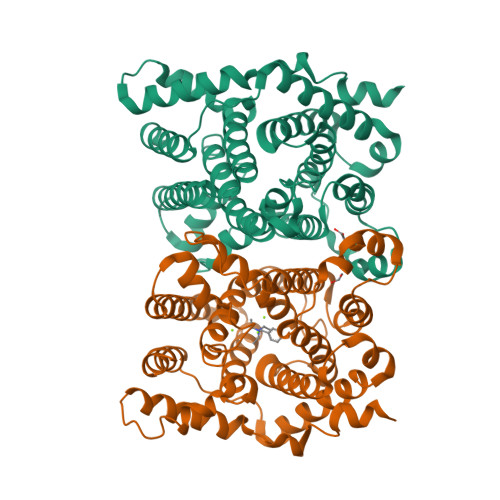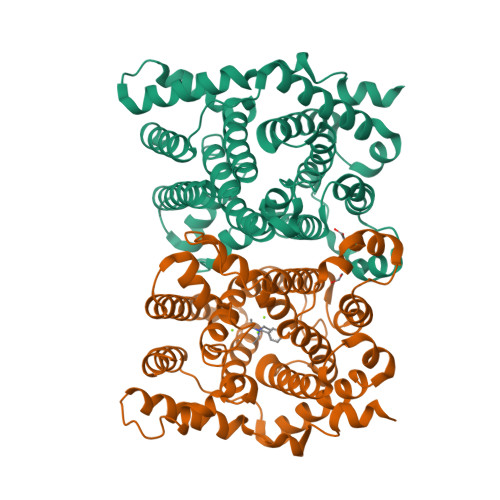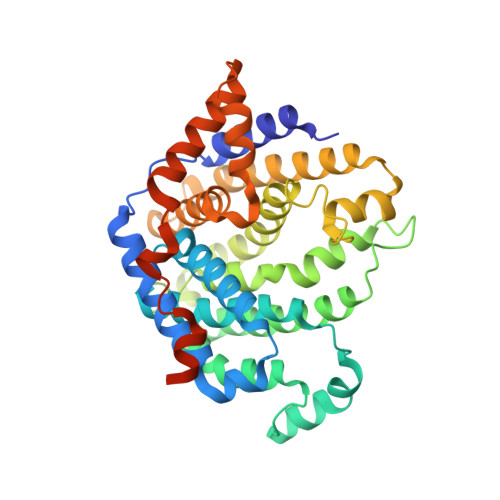Exploring biosynthetic diversity with trichodiene synthase.
Vedula, L.S., Zhao, Y., Coates, R.M., Koyama, T., Cane, D.E., Christianson, D.W.(2007) Arch Biochem Biophys 466: 260-266
- PubMed: 17678871
- DOI: https://doi.org/10.1016/j.abb.2007.06.016
- Primary Citation of Related Structures:
2Q9Y, 2Q9Z - PubMed Abstract:
Trichodiene synthase is a terpenoid cyclase that catalyzes the cyclization of farnesyl diphosphate (FPP) to form the bicyclic sesquiterpene hydrocarbon trichodiene (89%), at least five sesquiterpene side products (11%), and inorganic pyrophosphate (PP(i)). Incubation of trichodiene synthase with 2-fluorofarnesyl diphosphate or 4-methylfarnesyl diphosphate similarly yields sesquiterpene mixtures despite the electronic effects or steric bulk introduced by substrate derivatization. The versatility of the enzyme is also demonstrated in the 2.85A resolution X-ray crystal structure of the complex with Mg(2+) (3)-PP(i) and the benzyl triethylammonium cation, which is a bulkier mimic of the bisabolyl carbocation intermediate in catalysis. Taken together, these findings show that the active site of trichodiene synthase is sufficiently flexible to accommodate bulkier and electronically-diverse substrates and intermediates, which could indicate additional potential for the biosynthetic utility of this terpenoid cyclase.
Organizational Affiliation:
Roy and Diana Vagelos Laboratories, Department of Chemistry, University of Pennsylvania, Philadelphia, PA 19104-6323, USA.




















